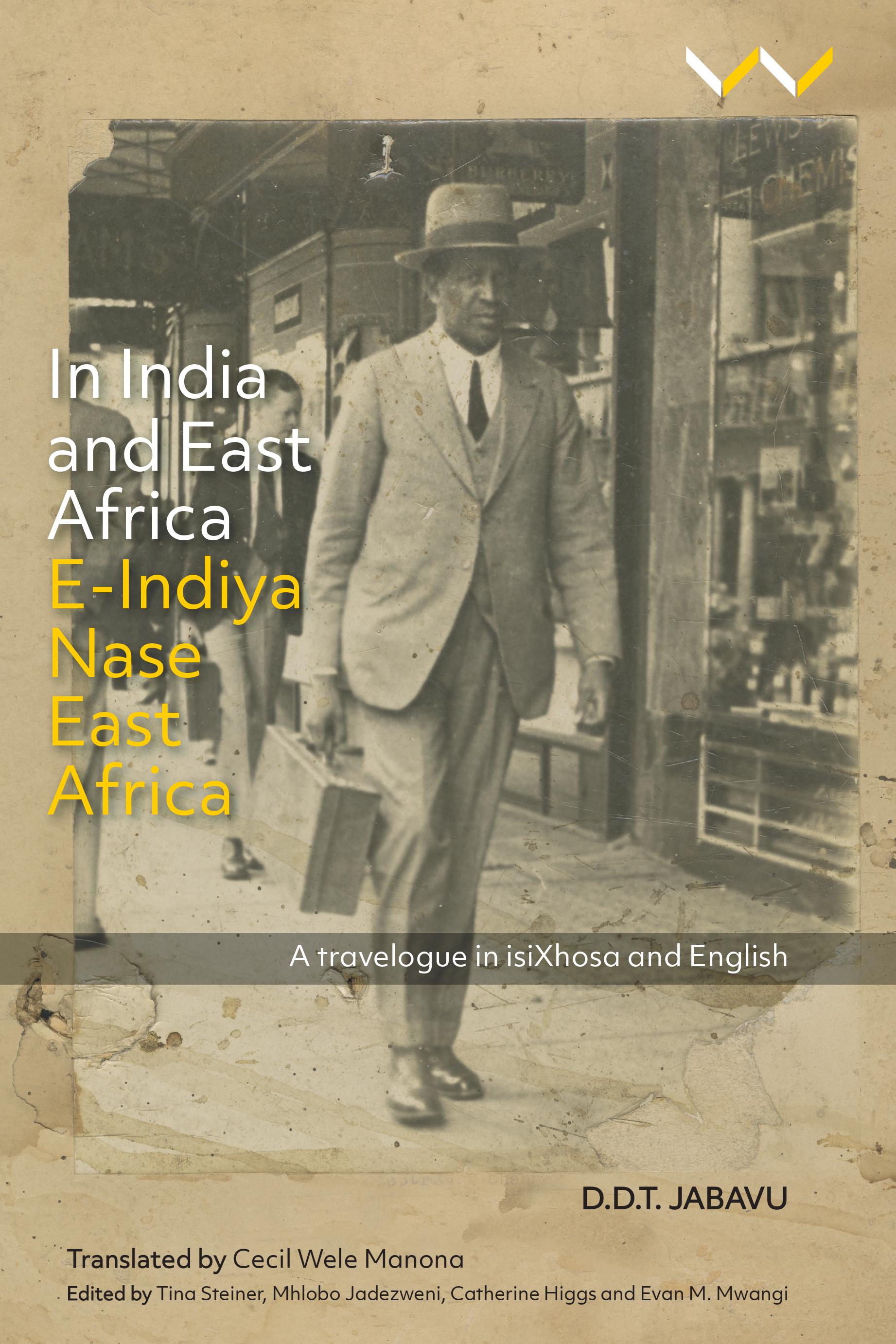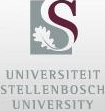Thanks to the work of four academics from across the globe, the travelogue of one of South Africa's leading black intellectuals of the early 20th century, the late Professor DDT (Davidson Don Tengo) Jabavu of Fort Hare University, has been published in a bilingual edition by Wits University Press.
The travelogue, called In India and East Africa / E-Indiya nase East Africa – A travelogue in isiXhosa and English, captures Jabavu's reflections during his four-month trip to India to attend the World Pacifist Meeting in Santiniketan and Sevagram in 1949, as well as his thoughts on how Mahatma Gandhi's principles of non-violence may be applied in South Africa's struggle for freedom. This little-known isiXhosa text, written in a conversational tone, provides a rare perspective on the mid-twentieth century transnational pacifist scene after Mahatma Gandhi's death.
“Jabavu's travelogue contributes to scholarship on intellectual exchanges between Africa and India but also shows a South African at home in the world. There have been many texts written by Indian travellers encountering Africa, but the perspective of a black South African on encountering India is much rarer," explains Prof Tina Steiner, Associate Professor in the English Department at Stellenbosch University (SU) and one the co-editors of the book.
“Jabavu was a seasoned international traveller who starts his narrative mentioning his extensive previous travels and places this particular voyage in the context of a life of travel in the pursuit of support for equality for South Africa's black population," adds Steiner.
The travelogue traces how geographies of various emancipatory movements – the civil rights movement, African liberation movements and the international peace movement – intersected at the World Pacifist Meeting.
Besides Steiner, who was the lead editor, the editorial team comprised Dr Mhlobo W. Jadezweni from Rhodes University, who is an isiXhosa expert and who updated the orthography of the original from 1951; and Prof Catherine Higgs, a historian and Head of the Department of History and Sociology at the University of British Columbia's Okanagan campus; and Prof Evan M. Mwangi, a Professor of English and Comparative Literature at Northwestern University in the United States and a Professor Extraordinaire of English at SU. Higgs is the author of the biography The Ghost of Equality - The Public Lives of D.D.T. Jabavu of South Africa 1885-1959.
The translation from isiXhosa into English was executed by the late Dr Cecil Wele Manona, an Anthropologist and Senior Research Officer at the Institute for Social and Economic Research (ISER) at Rhodes University.
Steiner explains that while Jabavu wrote most of his many books in English, he tended to write in isiXhosa towards the end of his life after his retirement from public life.
“This was also the case with his travel account to India and East Africa which was originally published in parts in the weekly Imvo Zabantsundu (African Opinion), which Jabavu's father, the politician and newspaper editor John Tengo Jabavu had founded in 1884; and then in book format by Lovedale Press in 1951."
The younger Jabavu was a professor in African Languages who taught at Fort Hare University from 1916 to 1944. While he was also politician, a pacifist and a staunch Methodist, he was first and foremost an educator and his politics came from a real concern for the quality of education for black students in South Africa.
“You have to understand that Fort Hare was the key institution of higher learning for black students from all over Africa at the time. So it was not surprising that when Jabavu embarked on his trip to India, many of his ex-Fort Hare students sent telegrams to him and asked him to stop over in Mombasa and Kampala to visit them, which he did on his return from India. The travelogue thus also invites reflections on the significance of a pan-African network of ex-Fort Hare students," says Steiner.
In November 1949, Jabavu set off for India via ship from Durban to attend the World Pacifist Meeting as one of 93 delegates from 31 countries across the world. After a week in Santiniketan, the delegates were split into groups and spent the next two weeks visiting various sites associated with Mahatma Gandhi's life and work. At the end of the two weeks, Jabavu and his group reconvened with all the other delegates in Gandhi's village, Sevagram, where the conference continued. However, his writings do not only describe the sights he saw in India and his experiences with his host families, but also reflects on the content of the conference itself.
“He provides us with insight on the proceedings, the discussions and resolutions of the conference and talks about listening to prominent pacifists like Dr Rajendra Prasad, Vera Brittain, Dr Mordecai Johnson, Rev Michael Scott, Dr Pao Swen Tseng to name just a few. Jabavu also met Indian Prime Minister Jawaharlal Nehru, whom he mentions he shook hands with in Parliament, as well as other government officials in independent India."
“The narrative shows how inspired he was by Gandhi's methods of non-violent resistance, his civil disobedience and ability to politically mobilise the masses. During his return voyage, he also met with important anti-colonial activists in Uganda and Kenya, like Elind Mathu, Harry Thuku and Jomo Kenyatta."
“From his writings, it is clear that Jabavu wanted to share these discussions with his fellow black South Africans. He was a Christian and believed in a Christianity that needed to be socially involved and relevant, and he very much focused on the principles of self-restraint and service to others and the impact that it could have on social transformation."
 How the travelogue came about
How the travelogue came about
The publication of Jabavu's work is the end product of a project, Indian Ocean Epistemologies, which Steiner and Mwangi had been collaborating on since 2017.
Through this project, Steiner and Mwangi developed a joint curriculum which was taught at Northwestern University in Chicago in 2018 and at SU in 2020; published a special issue on Indian Ocean Trajectories in The Journal of Eastern African Literary and Cultural Studies; and decided to publish the translated travelogue of Jabavu as part of their mission to translate a text that “would enrich the primary archive of Indian Ocean Studies from an African perspective". Their project formed part of a larger, overarching project called Global Theory in the South based at Northwestern University and led by Prof Penelope Deutscher. The overarching project was funded by the AW Mellon Foundation and is part of an initiative of the International Consortium of Critical Theory Programs.
“While Jabavu's travelogue E-Indiya nase East Africa had been publicly available for nearly seven decades, it was written in an old isiXhosa orthography and was thus not easy to read for contemporary readers," explains Steiner.
However, after seeing reference made to the travelogue in Prof Isabel Hofmeyr's groundbreaking article 'The Black Atlantic Meets the Indian Ocean' and hearing her mention Jabavu's travelogue on a few other occasions, Steiner started her search for an English translation.
This search led her to Higgs, who had published the DDT Jabavu biography The Ghost of Equality, which wasbased on research she had done in the late 1980s and 1990s for her PhD. Higgs had commissioned the help of Manona to translate Jabavu's isiXhosa text and shared this with Steiner.
“I really want to pay tribute to the late Dr Manona who translated Jabavu's travelogue as well as his wife, Mrs Nobantu Manona who gave us permission to use her late husband's translation in this edition."
She explains that the original isiXhosa text by Lovedale that Manona had used for his translation was then edited by Dr Jadezweni, who had to update the old isiXhosa to the contemporary orthography approved by the Pan South African Language Board (PanSALB).
“Jadezweni said that he had not encountered such a rich and beautifully written isiXhosa text before. Jabavu wrote in a conversational tone in a stream of consciousness style and made use of many isiXhosa idioms in his text. He was an entertaining writer with wide-ranging interests who wanted to encourage his local audience to see their own struggles reflected in similar struggles for equality across the globe."
“The travelogue's transnational orientation, its commitment to pacifism and its insistence that political dialogue is possible, make In India and East Africa/ E-Indiya nase East Africa an important document of the rich and diverse black South African intellectual tradition. Moreover, it once again confirms the significance of preserving and making accessible African-language texts to readers across Africa and the world."
Main photo: DDT Jabavu (right) with his father, the politician and news editor John Tengo Jabavu, as a young man and later as lecturer at Fort Hare University.
Story photo: The front cover of the travelogue, In India and East Africa / E-Indiya nase East Africa – A travelogue in isiXhosa and English, which captures Jabavu's reflections during his four-month trip to India to attend the World Pacifist Meeting in Santiniketan and Sevagram in 1949.

